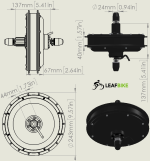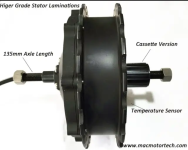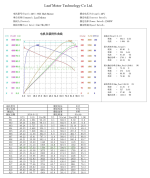Lowering the rear or raising the front will increase the rake angle which should make any bike more stable at speed but turn left/right slower i.e. you will have to input more motion into the handlebars to get the bike to turn.
Not bad, you kind of want a powerful upright bike to be like that anyway.
I would bet changing handlebar width would countercorrect for that.
Not sure where I am headed next but one option is to take my Schwinn Axum 29er frame and put a 24" wheel with a Leaf motor in it in the rear and a 26" wheel on the front. I also have a crank that has very short crank arms that I would install.
You'll have a hard time keeping the front wheel on the ground even with a 26" leaf at above 4kw. Whatever geometry alteration you make, make sure it allows you to lean on the handlebars so you can baby nudge the throttle.
Right now it has a 26" rear wheel with a Leaf motor in it and a 29" front wheel. I plan to leave it like that until I get a chance to try it for a little while. Motor/wheel mounted, still need to mount the controller and battery plus wire everything up...to be continued.
I'd recommend you move the battery as far forward as possible to help counterbalance the wheelie power of this motor.







